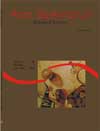<b>Metazoan parasites of flying gurnards, <em>Dactylopterus volitans</em> (Linnaeus, 1758) (Osteichthyes: Dactylopteridae) from the coastal zone of the State of Rio de Janeiro, Brazil</b> - DOI: 10.4025/actascibiolsci.v27i2.1320
Abstract
Seventy-eigth specimens of Dactylopterus volitans (Linnaeus,1758) collected from the coastal zone of the State of Rio de Janeiro (21-23º S, 41-45º W), Brazil, from December 2002 to January 2003, were necropsied to study their metazoan parasites. Twenty-seven species of parasites were collected: 1 aspidogastrean, 15 digenean, 1 monogenean, 2 cestodes, 2 acantocephalan, 4 nematodes, 1 branquiuran, and 1 isopod. All parasite species were recorded by the first time in D. volitans. The acanthocephalan Rhadinorhynchus sp. was the most dominant species with the highest prevalence in the parasite community of D. volitans. Opecoeloides sp. showed positive correlation between the host total length and parasite prevalence, while Rhadinorhynchus sp. have a negative correlation between the host´s total length and prevalence. One pair of endoparasite species (Dinurus sp.- Lecithochirium sp.) showed positive covariation between their abundances. As other parasite communities of benthic fishes from Rio de Janeiro, the parasite community of D. volitans is apparently a little−ordered species complex, characterized by the dominance of the endoparasite speciesDownloads
Download data is not yet available.
Published
2008-03-26
How to Cite
Cordeiro, A. da S., & Luque, J. L. (2008). <b>Metazoan parasites of flying gurnards, <em>Dactylopterus volitans</em> (Linnaeus, 1758) (Osteichthyes: Dactylopteridae) from the coastal zone of the State of Rio de Janeiro, Brazil</b> - DOI: 10.4025/actascibiolsci.v27i2.1320. Acta Scientiarum. Biological Sciences, 27(2), 119-123. https://doi.org/10.4025/actascibiolsci.v27i2.1320
Issue
Section
Zoology
DECLARATION OF ORIGINALITY AND COPYRIGHTS
I Declare that current article is original and has not been submitted for publication, in part or in whole, to any other national or international journal.
The copyrights belong exclusively to the authors. Published content is licensed under Creative Commons Attribution 4.0 (CC BY 4.0) guidelines, which allows sharing (copy and distribution of the material in any medium or format) and adaptation (remix, transform, and build upon the material) for any purpose, even commercially, under the terms of attribution.
Read this link for further information on how to use CC BY 4.0 properly.
0.6
2019CiteScore
31st percentile
Powered by 

0.6
2019CiteScore
31st percentile
Powered by 











1.png)




3.png)













